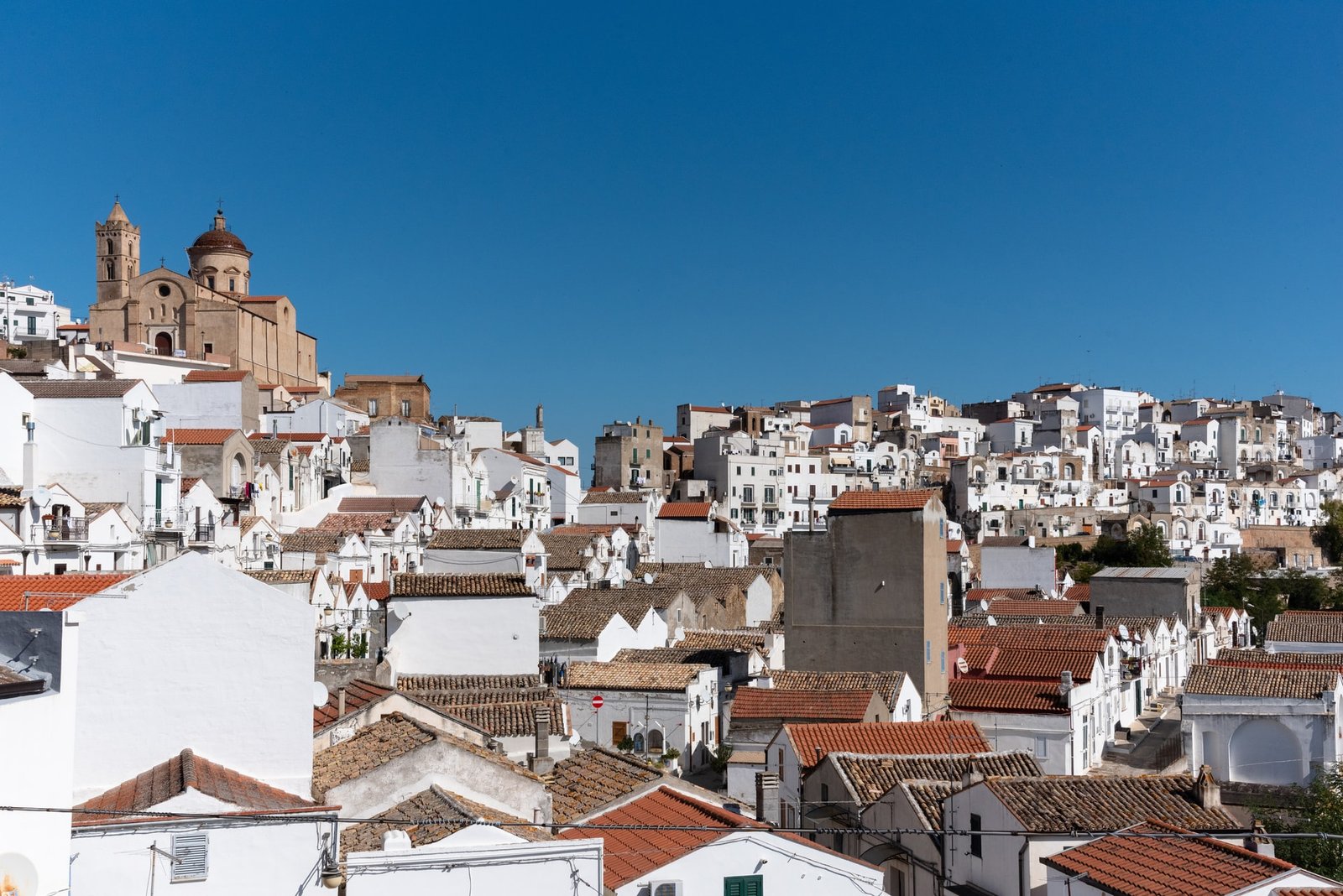The characteristic village of Pisticci is a well-known and popular centre, but still far from the phenomenon of mass tourism. Surrounded by white gullies and rich in suggestive views, it is one of the 'white towns' of Basilicata. Its historical centre is in fact criss-crossed by narrow streets and alleyways overlooked by small white houses with red roofs adorned with flower vases, colourful furnishings and small painted sculptures. In Pisticci, the sea meets the heights of the hinterland and lunar landscapes alternate with beaches with clear waters. A characteristic village that will show us an authentic face of Basilicata, still unknown to many.
Pisticci

Pisticci rises 364 metres above sea level on a hilly area between the Basento and Cavone rivers, bordering the villages of Ferrandina and Craco, not far from Matera. Its territory can be subdivided into two portions, the 'marina', which includes the coastline and surrounding areas, and the 'alta' (upper part), in which the historical centre is also developed, made up of no less than 16 districts, among which we find the two famous rioni: Rione Terravecchia, which corresponds to the oldest inhabited area where the remains of the Norman-Swabian castle can be admired, and Rione Dirupo. Due to the nature of the clay soil on which Pisticci lies, landslides have occurred several times in history. One of these, in 1988, led to the tragic collapse of Rione Casalnuovo: the locals, however, refused to abandon the area where, later, hundreds of small white houses were built: thus Rione Dirupo, now the symbol of the town, was born.
Discovering the characteristic village of Pisticci means first of all exploring its districts and discovering its history. The old core is certainly the village's attraction: starting from the highest (and oldest) point, we find Rione Terravecchia, where it is possible to admire the remains of the Norman-Swabian Castle, the Mother Church, the Chiesetta dell'Annunziata and the ruins of the Church of the Madonna della Stella, and ancient noble palaces. From Rione Terravecchia it is possible to look out over Rione Dirupo and its expanse of white houses, which you can appreciate up close among flowering pots and picturesque views.
The typical cuisine of Pisticci is genuine, typical of Lucania, with dishes with peasant roots based on vegetables, meat and homemade pasta. Let's start precisely with pasta: in Pisticci we find ruccoli (similar to gnocchetti) and tapparelle (diamond-shaped) to be enjoyed with sauce and cacioricotta cheese. Also excellent are maccheroni ai ferri and orecchiette, to be savoured with wild boar ragout or other game-based sauces. Those who do not prefer meat can enjoy excellent first courses with turnip tops, chickpeas or chickling peas, a tasty local legume. The second courses see meat triumph in excellent sausages flavoured with fennel or chilli pepper and in soppressate; fava beans with chicory are an unmissable and tasty dish, deeply rooted in the land and peasant culture. If you get the chance, also try lampascioni, small onion-like bulbs with a bitterish flavour. For desserts, apart from the pettole and cartellate typical of the Christmas festivities, we find purceddùzze (little pigs), which, similar to cartellate, involve a fried dough flavoured with honey, very special are also panzerotti filled with chickpea cream, bitter cocoa and sugar, a dessert with an intense and authentic flavour.
On 17 January, the feast of Saint Anthony Abbot is celebrated with the traditional bonfire and blessing of animals. On the last Sunday in April, the Madonna del Casale is celebrated, attracting pilgrims and devotees from neighbouring and even more distant towns. On 1 May, the Festa della Madonna delle Grazie is held, with a solemn procession through the streets of the village, while in early July, celebrations are organised in the Rione Matina in honour of the Madonna of Fatima and Christ the King. July also sees the Lucania Film Festival, an important international short film festival, and the Sagra dell'anguria e Festa di S. Anna. On 8 August, a very important event for the community takes place: the Dirupo d'Oro Award, where recognition is given to those who have emerged and succeeded in various fields. Finally, from 15 to 18 August there is the patronal feast of Our Lady of the Assumption, St. Roch and St. Vitus with the solemn procession of the triumphal horse-drawn cart.




